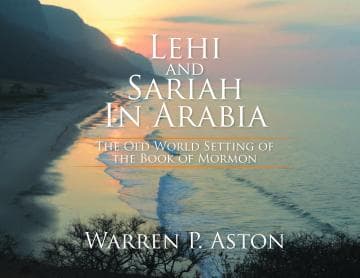Book
Lehi and Sariah in Arabia: The Old World Setting of the Book of Mormon
Aston, Warren P.
10 Chapters
Part 1: Lehi and Sariah's World
Aston, Warren P. | pp. 10–34
Part 2: "Into the Wilderness"
Aston, Warren P. | pp. 35–58
Part 3: "The Place Which Was Called Nahom"
Aston, Warren P. | pp. 59–93
Part 4: "Travel Nearly Eastward From That Time Forth"
Aston, Warren P. | pp. 94–100
Part 5: "We Called the Place Bountiful"
Aston, Warren P. | pp. 101–155
Part 6: "Out of Obscurity"
Aston, Warren P. | pp. 156–186
Part 7: New World Memories of "Bountiful"
Aston, Warren P. | pp. 187–196
Part 8: "Towards the Promised Land"
Aston, Warren P. | pp. 197–220
Appendix 1: Yemen, the Land of the Queen of Sheba
Abdullah, Yusuf M. | pp. 221
Appendix 2: Some Notes on the Tribal Origins of NHM
Aston, Warren P. | pp. 222–227
